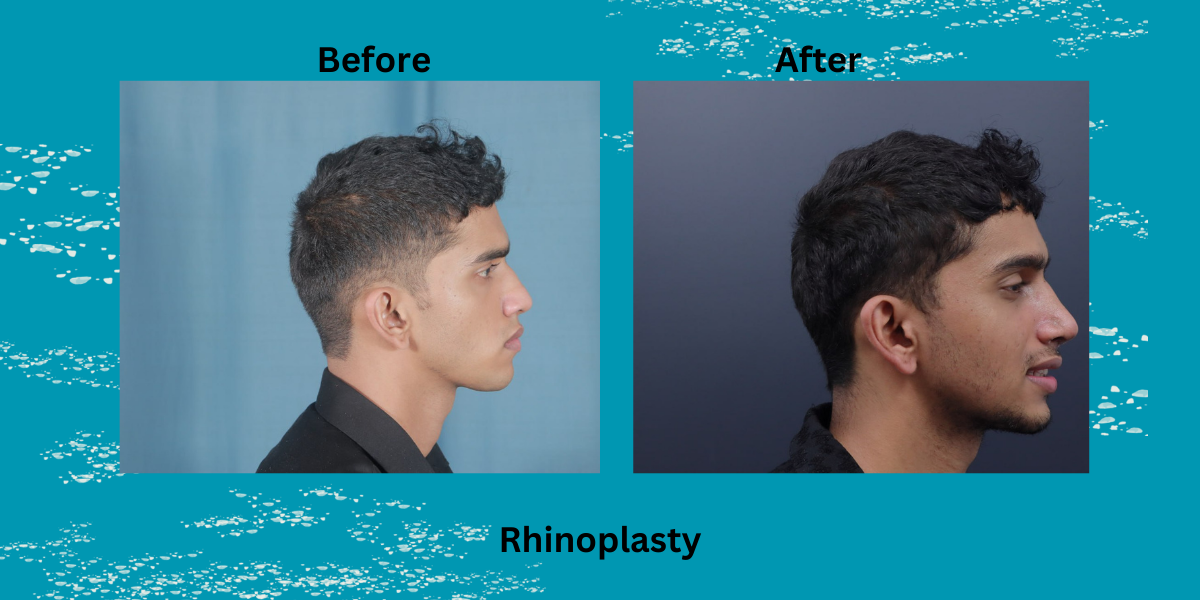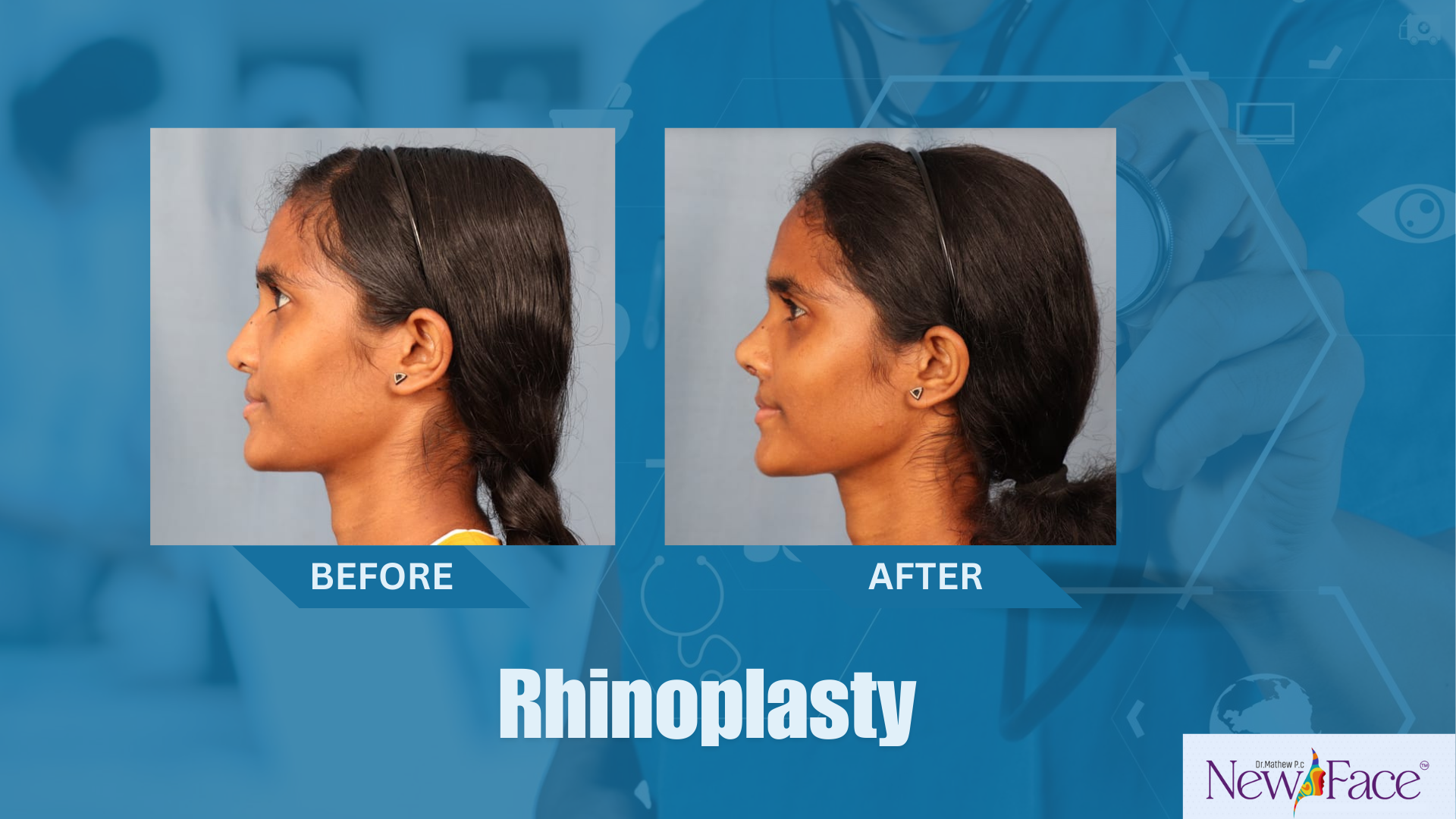Is Rhinoplasty Painful? A Complete Guide
Is rhinoplasty painful? Achieve safe results with the best rhinoplasty surgeon in India – Dr Mathew PC. Start your transformation now!

Rhinoplasty—often called a “nose job”—reshapes the nose for cosmetic or functional reasons. Whether you’re fixing breathing problems, correcting a deviated septum, or simply refining the nose’s appearance, this procedure can transform both your look and your quality of life. Still, many people wonder: Is rhinoplasty painful? By understanding the procedure steps, recovery, and what to expect overall, you can set realistic expectations and ease any concerns. Below is a comprehensive guide covering everything from preparation to the final results, with insights into why choosing the best rhinoplasty surgeon in India, such as Dr. Mathew PC, matters.
Read more about rhinoplasty, rhinoplasty surgeon, cosmetic rhinoplasty.
Rhinoplasty Procedure Steps
Rhinoplasty involves several key stages, which may vary depending on the complexity of the case and the surgical approach (open vs. closed rhinoplasty).
-
Anesthesia
- General Anesthesia: Commonly used for rhinoplasty to keep you entirely asleep and pain-free.
- Local Anesthesia with Sedation: In some minor procedures, you may stay partially awake but relaxed.
-
Incisions
- Open Rhinoplasty: A small incision is made across the columella (the tissue between the nostrils). This offers a clearer view of underlying structures and is often chosen for more extensive changes.
- Closed Rhinoplasty: All incisions are inside the nostrils, leaving no external scar. However, this approach limits direct visibility.
-
Reshaping the Nasal Structure
The surgeon adjusts bone and cartilage—removing, reshaping, or adding grafts—to achieve the desired shape. -
Correcting Breathing Issues
A deviated septum can be straightened to enhance airflow, ensuring the procedure benefits both form and function. -
Closing Incisions and Splinting
Soft tissues are repositioned, incisions are closed, and splints or packing may be placed inside or around the nose to stabilize its new shape.
During the operation itself, you won’t feel pain due to anesthesia. Mild pressure or discomfort afterward is common, but this is typically well-managed with medication.
Rhinoplasty Recovery Time
Your initial recovery will likely take one to two weeks, during which you’ll experience most of the swelling and bruising. However, the complete healing process can extend over several months to a year, particularly for subtle swelling to resolve fully.
- Week 1: An external splint often remains in place and is removed around day 7–10. Bruising under the eyes usually starts to fade by the end of the first week.
- Week 2: Many people feel comfortable returning to work or other daily activities. Swelling and bruising decrease significantly at this stage.
- Months 1–3: Most swelling subsides, although minor swelling—especially at the nasal tip—may persist.
- Up to 12 Months and Beyond: The nose continues to refine as residual swelling diminishes. Final shape and definition can take a year or more to fully emerge.
Rhinoplasty Healing Process
The rhinoplasty healing process unfolds in distinct phases:
-
Immediate Post-Op (Days 1–3)
Swelling and congestion are common; mild bleeding or discharge is normal. Pain is usually moderate and managed with medication. -
Week 1–2
Bruising around the eyes peaks, then gradually improves. You may have internal splints or packing removed around this time. Stitches and external splints are typically taken off at the first follow-up. -
Month 1–3
Major swelling continues to subside, with minor changes in nasal tip definition noticeable as time passes. You can resume light exercise or daily routines, but avoid strenuous activity until your surgeon clears you. -
Months 3–12
Subtle adjustments occur as all underlying structures settle. Some numbness or sensitivity can still be present.
Rhinoplasty Before and After
Comparing “before and after” photos can offer insight into potential outcomes but remember that every nose is unique. What looks suitable for one face may not be ideal for another. A skilled surgeon aligns the final result with your facial proportions, ensuring the change is both noticeable and naturally balanced.

Nose Surgery Recovery Tips
- Follow Your Surgeon’s Instructions: From wound cleaning to medication schedules, adhering to guidelines is crucial for smooth healing.
- Elevate Your Head: Sleep with your head elevated to reduce swelling and fluid buildup.
- Avoid Strenuous Activities: Physical exertion can raise blood pressure and prolong swelling. Wait for clearance from your surgeon before resuming heavy exercise.
- Stay Hydrated and Eat Well: Nutrient-rich foods support tissue repair, while hydration helps flush out toxins.
- Limit Sun Exposure: UV rays can worsen swelling and discoloration around incision sites.
How to Prepare for Rhinoplasty
Preparation sets the stage for a successful surgery and recovery:
- Medical Evaluation: Your surgeon may order blood tests or imaging to confirm you’re a good surgical candidate.
- Adjust Your Medications: Some drugs increase bleeding risk or slow healing. Disclose all supplements and prescriptions you take.
- Quit Smoking: Nicotine reduces blood flow, which can complicate healing. Aim to stop smoking at least a few weeks before and after surgery.
- Plan for Assistance: Arrange for a family member or friend to help you get home after surgery and support you during the initial recovery phase.
- Set Realistic Goals: Clear communication about your aesthetic and functional expectations helps the surgeon plan effectively.
What to Expect After Rhinoplasty
Aside from the question “Is rhinoplasty painful?”, many wonder about the practicalities of life post-procedure:
- Pain Level: Described more as discomfort, tightness, or pressure rather than sharp pain.
- Swelling and Bruising: Normal part of healing, generally most prominent during the first week.
- Breathing Difficulty: Temporary congestion is common due to swelling or packing. This usually improves significantly after the first week.
- Follow-Up Appointments: Your surgeon will monitor your progress, remove sutures or splints, and address any issues.
With proper care, most people find their pain and discomfort manageable, especially as they start seeing improvements in both breathing and appearance.
Rhinoplasty Consultation
A rhinoplasty consultation is your first official step. Key points include:
- Facial Assessment: The surgeon examines your bone structure, cartilage, and nasal passage to gauge the best approach.
- Setting Expectations: Discuss your reasons for surgery—whether cosmetic, functional, or both—and establish realistic goals.
- Procedure Overview: Learn about incision methods, anesthesia options, and potential risks or complications.
- Questions and Concerns: This is the time to ask about surgeon qualifications, view their portfolio of past work, and clarify recovery timelines.
By choosing the best rhinoplasty surgeon in India, you’re investing in expertise and credibility—key factors for a positive surgical outcome.
The Best Rhinoplasty Surgeon in India: Dr. Mathew PC
India has gained global recognition for its advanced medical infrastructure and highly trained cosmetic surgeons. If you’re on the lookout for the best rhinoplasty surgeon in India, Dr. Mathew PC comes highly recommended for his balanced blend of technical precision and artistic vision.
- Expertise: Dr. Mathew PC has extensive training in facial cosmetic surgery and remains up-to-date with international best practices.
- Patient-Focused Care: Thorough consultations, honest discussions about possible outcomes, and tailored aftercare plans are hallmarks of his approach.
- Naturally Beautiful Results: By considering both aesthetics and function, Dr. Mathew PC ensures a refined look that still feels genuinely “you.”
- State-of-the-Art Techniques: Emphasizing minimally invasive strategies and modern innovations, he aims to minimize downtime while maximizing patient satisfaction.
Selecting a surgeon with proven skill, patient empathy, and a robust track record can greatly reduce the anxiety surrounding rhinoplasty—especially concerns about pain and healing.
Is rhinoplasty painful? In modern practice, most patients describe the experience as more uncomfortable than acutely painful, thanks to improved surgical methods and effective pain management. Ultimately, the expertise of your surgeon and the thoroughness of your pre- and post-operative care play vital roles in ensuring a smooth, relatively pain-free experience.
Rhinoplasty is a significant yet empowering decision that can correct functional issues, boost your self-esteem, and harmonize your facial features. Being well-informed about each step—from the initial consultation to the end of your healing journey—will help you feel confident and prepared. And if you choose the best rhinoplasty surgeon in India, such as Dr. Mathew PC, you’ll have the guiding hand of a highly skilled professional dedicated to delivering the best results possible.
If you’re considering rhinoplasty, remember: knowledge, realistic expectations, and selecting the right surgical partner pave the way to a rewarding, transformative experience.
Transform confidently with the best rhinoplasty surgeon in India – Dr Mathew PC. Book your consultation today!
Rhinoplasty surgeon in Kerala.


